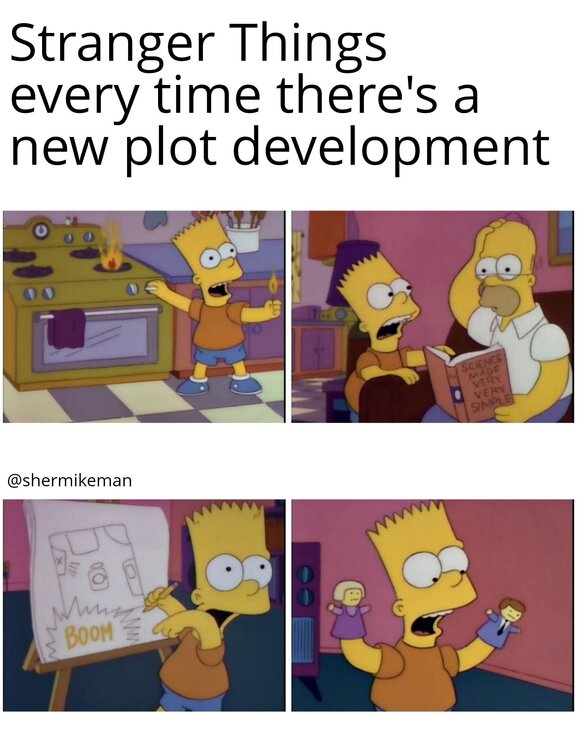...
...
...
...
...
...
...
...
...
...
...
...
...
...
...
...
...
...
Houston Texans 2025 Season Thread
Is this the end of shitty bowl games?
Yea I don’t get it. Even if you expand to 16, that only knocks out 2 bowls. Is the new threshold gonna be 8-4 to get in? 6-6 and 7-5 teams can fuck off?
Houston Texans 2025 Season Thread
Houston Texans 2025 Season Thread
2025 Super Saturday Bowl Game Thread
Clock guy taking a shit or what?
New Site Software / Theme
Am I missing a setting so when I click on surly, I go to the home page and not the last forum I was in?
Andor
You’ll just end up with 800 “who is that? Why is he doing that? What’s the point of this” if she lacks any context at all
Dedicated Stranger Things Series Thread
New Site Software / Theme
Could this be the craziest coaching carousel of all time?
He made it known he wasn’t done coaching. Utah was ready to move onto the HCIW before he got poached
Citrus Bowl 2025 Game Week Thread
Citrus Bowl 2025 Game Week Thread
“He’s happy bc he’s already accepted the Titans job”
Transfer Cycle 2025-2026 - Sunday, Bloody Sunday
Transfer Cycle 2025-2026 - Sunday, Bloody Sunday
Actual fireable offense if sark played this kid, even if he was eligible, which he ain’t
Avatar: Fire and Ash
My actual thoughts after sitting on it:
Dedicated Stranger Things Series Thread
Netflix already admitted they know we are too stupid and can't pay attention
https://www.pcmag.com/news/netflix-is-telling-writers-to-dumb-down-shows-since-viewers-are-on-their
Could this be the craziest coaching carousel of all time?
Michigan and Penn State both stumbled ass backwards into decent hires.
Could this be the craziest coaching carousel of all time?
He old, but he's a culture guy. Fix the Michigan mess, install a system, leave it to a successor
Texas WBB 2025-26: Return to the Final Four
TO BE FAIR -
We did struggle with SDSU for like half the game and UConn blew Iowa's back out.
Avatar: Fire and Ash
Bro went native for some Navi pussy
Citrus Bowl 2025 Game Week Thread
Also will be nice for Arch to game in-game reps with the WRs sticking around (bye Moore)
Dedicated Stranger Things Series Thread
Dramatic teenager and convoluted plots. It’s going to be balls to the wall to try and wrap it up in 2 hours next week
Transfer Cycle 2025-2026 - Sunday, Bloody Sunday
I just heard my dad and stepmom scream and clutch their gaudy turquoise crap
Transfer Cycle 2025-2026 - Sunday, Bloody Sunday
We like it when we buy players off another roster, we hate it when a beloved should-be backup leaves for more money
We want it both ways.
Citrus Bowl 2025 Game Week Thread
Home
Js1
...
...
...
...
...
...
...
...
...
...
...
...
...
...
...
...
...
...
Close
Chrome (Android)
Tap the lock icon next to the address bar. Tap Permissions → Notifications . Adjust your preference.
Chrome (Desktop)
Click the padlock icon in the address bar. Select Site settings . Find Notifications and adjust your preference.
Safari (iOS 16.4+)
Ensure the site is installed via Add to Home Screen . Open Settings App → Notifications . Find your app name and adjust your preference.
Safari (macOS)
Go to Safari → Preferences . Click the Websites tab. Select Notifications in the sidebar. Find this website and adjust your preference.
Edge (Android)
Tap the lock icon next to the address bar. Tap Permissions .
Find Notifications and adjust your preference.
Edge (Desktop)
Click the padlock icon in the address bar. Click Permissions for this site . Find Notifications and adjust your preference.
Firefox (Android)
Go to Settings → Site permissions . Tap Notifications . Find this site in the list and adjust your preference.
Firefox (Desktop)
Open Firefox Settings. Search for Notifications . Find this site in the list and adjust your preference.



